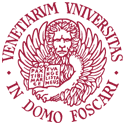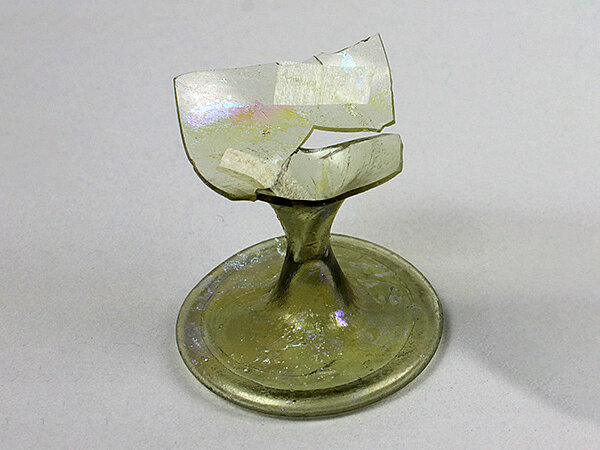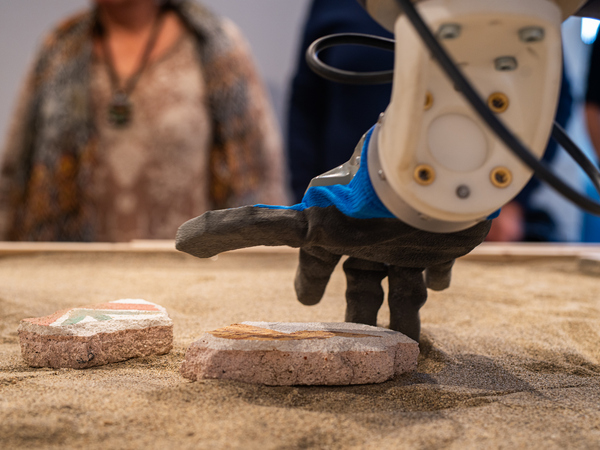Bridging Time and Technology: the DIGITALIA Project Brings Cultural Heritage into the Future

How can we protect cultural heritage from environmental risks, natural disasters and the passage of time? How can archaeological sites, ancient inscriptions and historical monuments be transformed into digital data to support research, conservation and communication? These are some of the questions addressed by DIGITALIA, a cutting-edge European project coordinated by Istanbul University (Turkey) and supported by Ca’ Foscari University of Venice, which proposes innovative digital solutions for the management of cultural heritage that ensure sustainability and responsiveness to contemporary challenges.
From the heart of Ca' Foscari’s vibrant research landscape comes “Bridging Time and Technology”, a series of online seminars that will take place on the mornings of 11, 12, 19 and 20 June 2025. The initiative forms part of the DIGITALIA project – Digital Solutions for Sustainable and Disaster Resilient Heritage Management – funded by the European Union’s Erasmus+ Programme (2024-1-TR01-KA220-VET-000251597), and is curated by Lorenzo Calvelli, Franz Fischer, Elisa Corrò and Sabrina Pesce. Alongside Istanbul University and Ca’ Foscari, the project involves several international partners, including the Provincial Directorate of Culture and Tourism of Antalya (Turkey), the Complutense University of Madrid (Spain) and the Italian Ministry of Culture.
The aim of DIGITALIA is ambitious: to train a new generation of experts capable of applying advanced digital tools to the safeguarding of tangible cultural heritage. In recent years, countries particularly exposed to environmental hazards and disasters, such as Turkey, Italy and Spain, have recognised the need to strengthen their capacity for response and adaptation through targeted training programmes. These are designed to address two of today’s most urgent challenges – the digital transition and the increasing risk posed by natural disasters – by promoting the integration of digital technologies into the processes of heritage management and protection.
In a world where digitisation has transformed the way we live, work and communicate, the cultural heritage sector is also called upon to evolve. The COVID-19 pandemic has accelerated the adoption of digital solutions and highlighted the importance of specific skills for managing heritage using advanced technological tools. However, the shortage of specialised professionals continues to hinder the full implementation of European strategies. With Recommendation (EU) 2021/1970 of 10 November 2021, the European Commission set the objective of leading Europe’s digital transformation by 2030. Reaching this goal requires investment in the training of coordinators, specialists and educators equipped with a broad vision and the necessary expertise.
DIGITALIA responds to this scenario by offering practical, interdisciplinary and labour market-oriented training programmes for both university students and professionals.
«Thanks to interviews and questionnaires conducted with professionals in the field», explains Lorenzo Calvelli, coordinator of the Ca’ Foscari team, «we have identified specific needs that have guided the design of a series of Virtual Training sessions conceived to address the skills most in demand. This participatory approach ensures that the workshops offer concrete responses to the cultural sector’s needs, providing tools and knowledge that are immediately applicable».
Four sessions, eight hours of training, one interdisciplinary team.
The programme opens on Wednesday 11 June with an entirely Venetian session, featuring Elisa Corrò, Sabrina Pesce, Paola Peratello and Tatiana Tommasi, researchers from Ca’ Foscari University, who will guide participants through the challenges and opportunities of digitising archaeological and epigraphic materials. How can a Roman inscription be transformed into a 3D object? Which technologies are most effective for preserving and sharing results? Combining theoretical insights with practical examples, this seminar will offer concrete answers through the analysis of real-world case studies.
On Thursday 12 June, Nevio Danelon (Sapienza University of Rome) will focus on a key topic: the use of Geographic Information Systems (GIS) in the cultural heritage sector. GIS technology allows for highly precise mapping, monitoring and correlation of spatial data, opening new possibilities for research, enhancement and damage prevention. This is an innovative tool that enables the planning of targeted and sustainable interventions.
The third session, scheduled for Thursday 19 June, will feature Chiara Tomaini from the Veneto Institute for Cultural Heritage. The topic is of immediate relevance: risk management and disaster prevention in the context of cultural heritage. What happens when an earthquake strikes an archaeological site? This seminar will address emergencies caused by both natural phenomena and human activity, offering a practical perspective grounded in the analysis of real scenarios.
Finally, on Friday 20 June, Eleonora Delpozzo (Ca’ Foscari University) will close the series with a focus on Building Information Modeling (BIM), a technology originally developed for engineering and architecture that is now being applied in archaeological contexts. BIM makes it possible to create highly detailed and interactive three-dimensional digital models, transforming approaches to conservation and the enhancement of archaeological artefacts.
How to Register
All sessions will take place online from 10:00 to 12:00 (CEST) and are open to students, researchers, cultural heritage professionals and anyone interested in acquiring skills in the field of digital heritage preservation.
To register, please send an email to: vedph@unive.it
Further information is available at this link.










